Vitamins and Minerals- Disorders on animal health
1/48
There's no tags or description
Looks like no tags are added yet.
Name | Mastery | Learn | Test | Matching | Spaced |
|---|
No study sessions yet.
49 Terms
Proximate analysis ‘Chemistry of Feed’
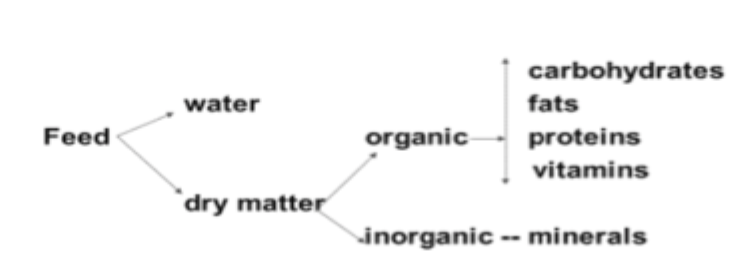
Dosage for feeding vitamin minerals graph
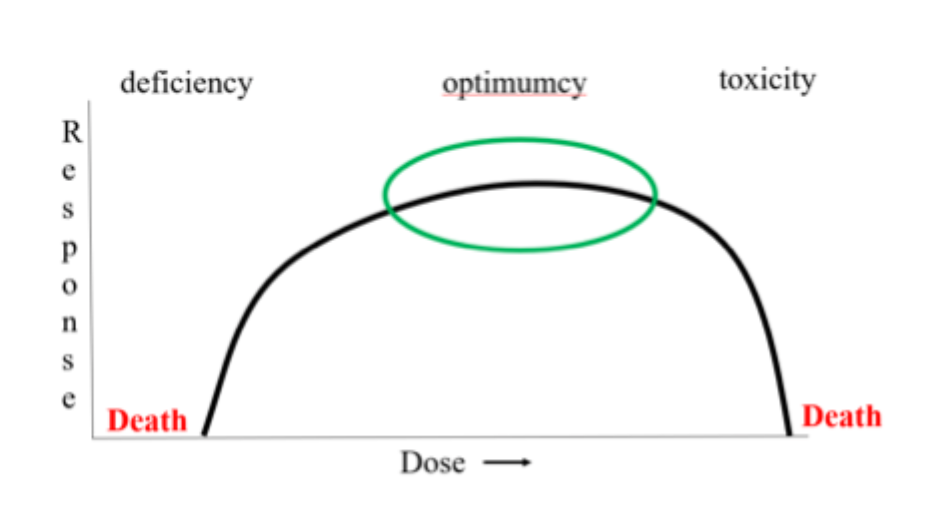
Feeding nutrients
Feed is a composition of nutrients
The goal is to supply adequate amounts and proportion of these nutrients to meet the animals requirements
Food sources of minerals and vitamins in animal diets
Forage
Veggies
Fruit
Concentrate
Mineral blends
Analysis of nutrient compositions
Feeding mineral to animals
Common Macromineral sources for supplementation
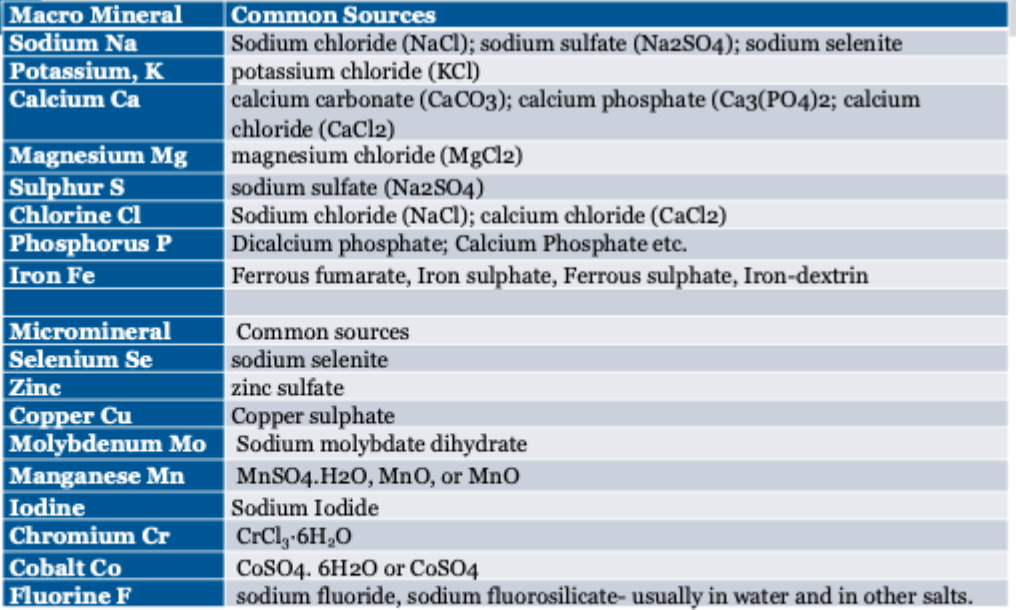
True mineral supplementation: when you should
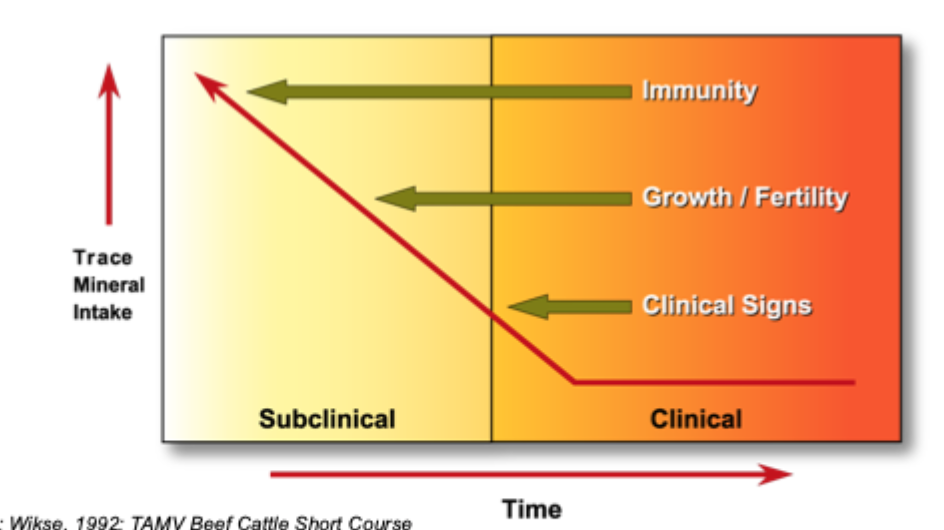
Minerals as antioxidants
Vitamin E
Vitamin C
Selenium
Iron
Copper
Zinc
Manganese
Riboflavin- vit B2
Vitamin E & C and selenium are primarily antioxidant function
Iron, copper, zinc and manganese are co- factors for the antioxidant enzymes catalyse and superoxide dismutase
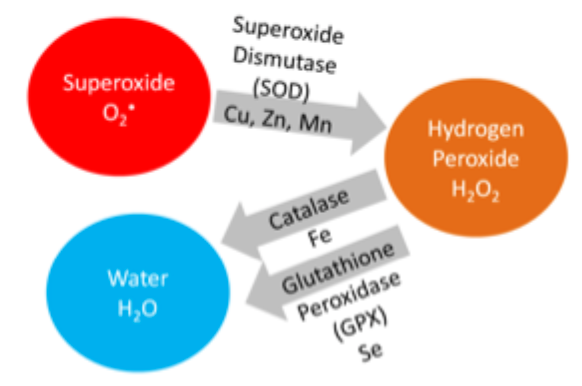
Role of minerals and vitamins in antioxidant systems
Oxidative stress: reactive oxygen species are generated by the induction of exogenous and endogenous sources
Enzymatic antioxidants, non- enzymatic antioxidants, and metal- binding proteins in the body fight against ROS via free radical scavenging and metal chelation mechanisms
When ROS production exceeds antioxidant system, this results in the development of a state called oxidative stress
Specific mineral/ vitamin requirements- cats
Cats require preformed vitamin A and D and niacin
Specific mineral/ vitamin requirements- dogs
Dogs require vitamin D
They can process Vitamin A from B carotene
Specific mineral/ vitamin requirements- zoo animals
Variable digestive system
Omnivores- variety of vegetable and fruits
Obligate carnivores- meat
Insects- mineral blends and supplements
Reason for increased antioxidants?
Increased age or sick animals need more antioxidants
Specific mineral/ vitamin requirement- monogastrics
Sows milk is low in Fe
high dose of iron intra- muscular
iron dextrin injections- piglets
Compound feed should meet all nutrients requirements
laying chickens have high Ca, P requirements
Specific mineral/ vitamin requirement- aqua (fish)
Minerals:
some absorbed from the aquatic environment
bioavailability from diet/ supplements
P and N encourage algal growth
Fish live in a water with a wide range of salinity levels (0-35%) e.g. freshwater, seawater and brackish water
Vitamins: C and B’s: ADEK
leaching of water- soluble vitamins
fish cannot synthesise vitamin C
phosphorylated ascorbic acid
allowance for manufacturing losses, shelf life ect.
carotenoids and pigments- astaxanthin, canthaxanthin;
Mineral deficiency symptoms as well as toxicity requires careful balance
Specific mineral/ vitamin requirement- Hind gut fermenters/ ruminants
No cellulase but LI microbial activity
micro- nutrient req.- ~ monogastrics
fibre improves gastric evacuation and prevents enteritis
hoof health in horses- vitamin and mineral supplements
Ruminants:
rumen microbes synthesise the bulk of B- vitamins
supplementary B- vitamins for high- producing cows
- high Ca and others to meet milk production
Transition cows
- undergo dynamic change in min and vit requirement
Bioavailability of inorganic micromineral sources
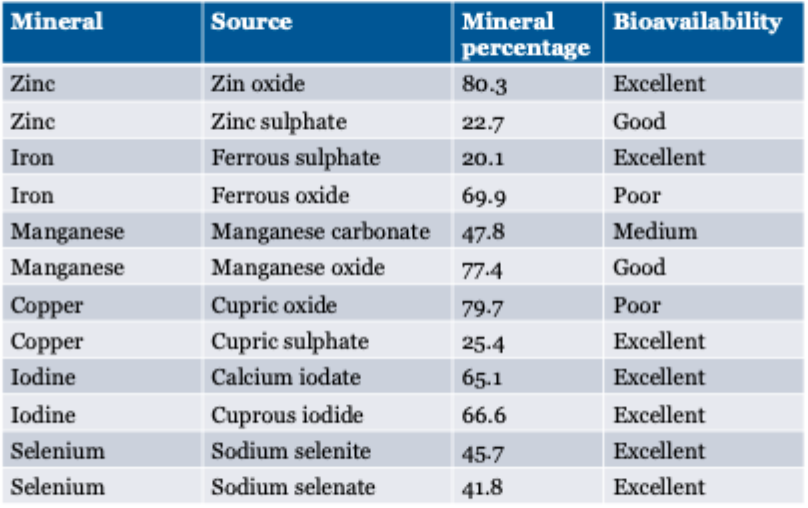
Inorganic, organic, chelated minerals- bioavailability
Minerals are available in inorganic or organic forms
sulfates, carbonates, chlorides and oxides
Inorganic minerals release free ions; ions are reactive and likely to bind to other dietary components (organic)
Organic mineral sources- provided as a complex with an organic agent e.g. amino acids, proteins, and carboyhyrates
Organic forms are supposed to minimise the interactions and enhance the absorption and bioavailability of minerals
Chelated minerals- minerals that have been chemically bound to an organic molecules, such as amino acid, forming a protective shell around the mineral. The body absorbs amino acids quite effectively and so cheated minerals have a higher bioavailability.
Bioavailable, more effective, more stable, more tolerated
Examples of inorganic and chelated mineral sources
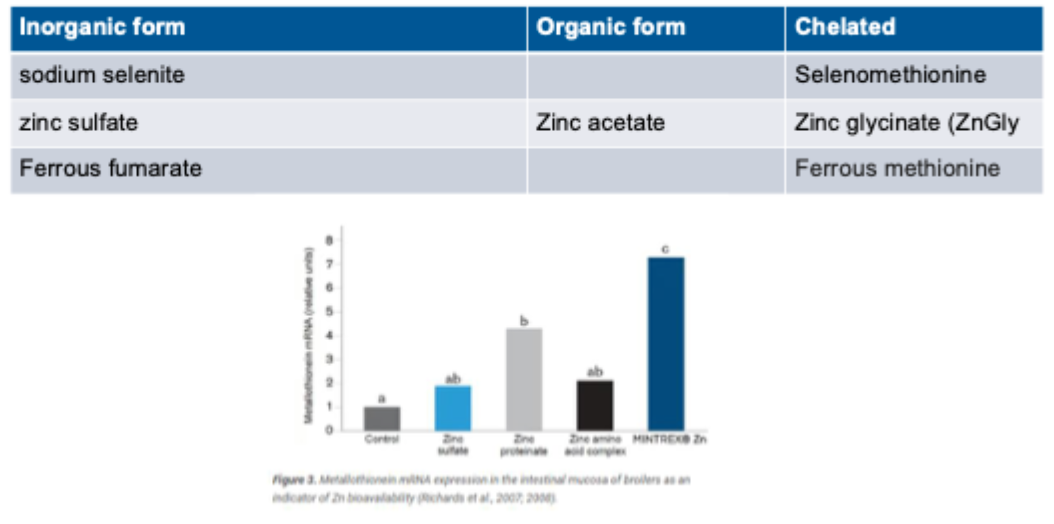
Why not more inorganics?
Mineral interactions/ antagonists
Lower biological availability/ activity
Environmental concerns
Chelating minerals- improve absorption
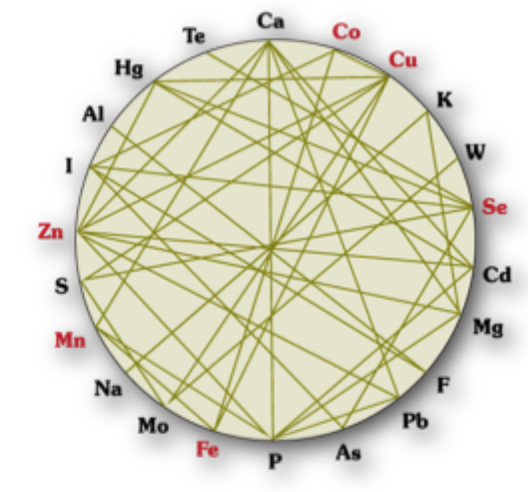
Milk fever- what is it?
Calcium deficiency (or failure of calcium homeostasis)
Blood calcium < 8.6 mg/ dL
clinical cases < 5mg/ dL
Reduces DMI post calving
predisposes cow to negative energy balance
DMI may be further reduced by:
retained placenta
displaced abomassum
ketosis
Milk fever- cascade 1
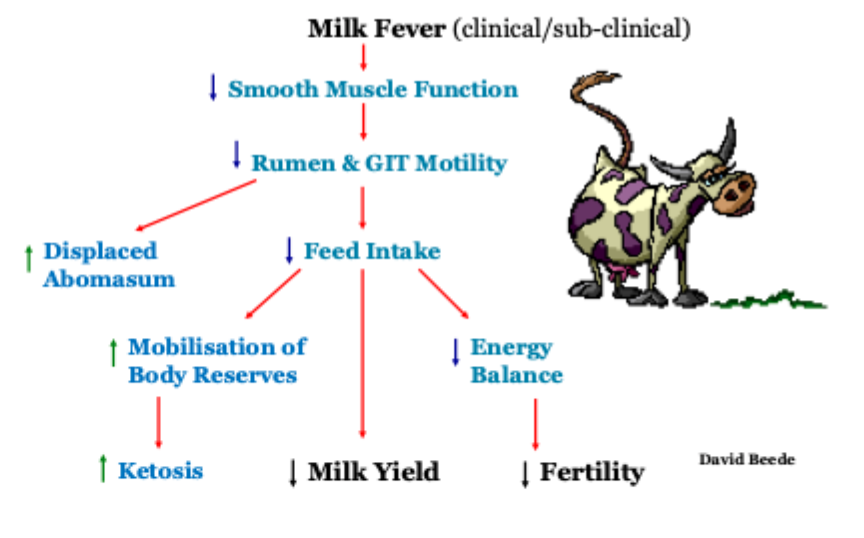
Milk fever- cascade 2
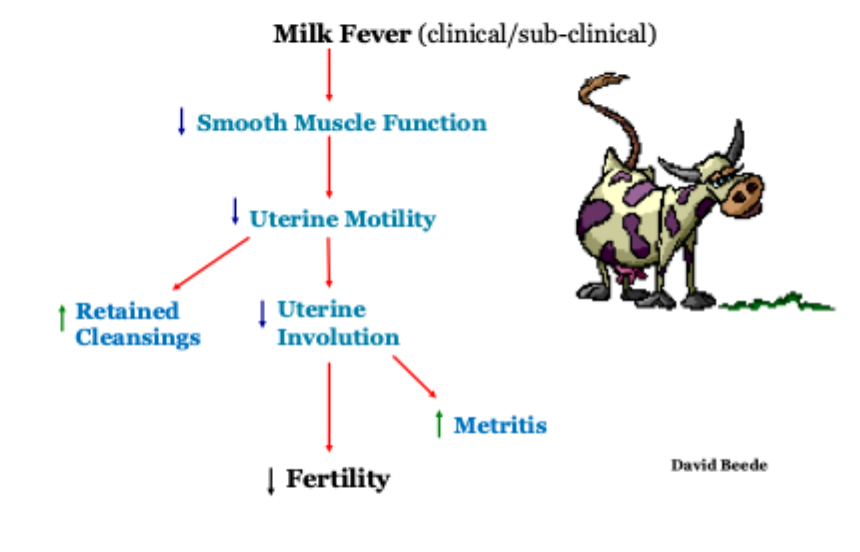
Milk fever- calcium homeostasis
Parathyroid hormone (PTH)
bone resorption
urinary re- absorption
stimulates 1,25 (OH)2D
1,25 (OH)- D
produced in kidneys
increases calcium uptake from gut
Milk fever- is it just potassium “toxicity”?
High K+ forages increase urinary pH
Lowering K+ pre- calving can improve calcium homeostasis; but not necessarily milk fever
It is through reducing magnesium absorption? No evidence for this direct effect
Low calcium <20 mg/ day
switch on calcium homeostasis mechanisms
Very high calcium > 1.5% DM
may overcome passive transport issues
Low DCAD diet- addition of anionic products
Milk fever- how to achieve a low DCAD
Use forage of low potassium status
non- fertilised “dry cow” pasture/ silage fields
Addition of anionic products
SoyChlor (approx. -2,616 mEq/ kg)
BioChlor (aprrox. -3,380 mEq/ kg)
*Need to add calcium as well
Addition of “All- in- One” mineral packs
anionic salts PLUS calcium
Anionic salts- NH4Cl; CaCl2; MgSO4
Max 3,000 - 3,500 mEq/ day added to the diet
danger of acute acidosis
Milk fever- phosphorus
Phosphorus is not as well regulated as calcium
Too much phosphorus can increase the risk of milk fever
increasing from 0.3%DM to 0.4%DM increased risk by 18%
practical experience would suggest 60g/ day definitely causes problems
Excessive phosphorus
reduces the effectiveness of path
inhibits 1-25 (OH)2D production
Milk fever- magnesium
Magnesium absorbed primarily through rumen epithelium
at low levels, a K- sensitive pathway is used
high K reduced the effectiveness of this route
Magnesium is critical for the release of PTH
low magnesium reduced 1,25(OH)2D production
Increasing magnesium from 0.3% DM to 0.4% DM
reduces risk of milk fever by 62%
Equates to around 40-50g magnesium / day
overcomes the K- sensitivity and the K- insensitivity pathway used
Milk fever- vitamin D
Not the lack of vitamin D that causes milk fever it is the refractory receptors
Very high dosage may help
approx. 20,000 iu/ day
Better effect in Low DCAD rations
Milk fever- summary
Milk fever is a major disease affecting dairy cows
especially at sub- clinical levels
High potassium forages are a main causative agent
reduce as much as is practical (lower grass silage peripaturient)
Careful attention is needed to the macro- mineral supply pre- calving
inter- relationship exist
Phosphorus Cyle

Nutrient supply and availability- phosphorus
Plant based diets contain phytate- an ANF
Most phosphorus in feed can exist in inorganic form, binds to phytate = phytate- phosphorus complex
Low availability of P for digestion and absorption
significant in fishes, poultry and pigs
Requirement: P to available P
Phytate enzyme is used to bind phytate, release P in the diet
Unavailable P is released with excreta; loss to the environment
P deficiency
Poor appetite and feed intake; poor growth, higher breeder mortality rates, reduced fertility and milk production, bone breakage and bone deformities in severe cases.
Mg: Grass staggers/ hypomagnesaemia
3 danger periods
spring, shortly after turnout
summer, if wetter than usual
autumn, on a flush of grass/ late N application
Reduced Magnesium intake
grass low in Mg, less supplementary feed used
spring grass in high moisture, therefore lower intakes of DM
Reduced magnesium absorption
higher fertiliser use (N)
Increased requirement and stesses
lactation, growth, age
cold wet weather, excitement, calving
Copper
Needed in many enzyme systems
Energy metabolism
fertility, milk yield
Immune function
mastitis
Pigmentation of hair
‘gingering’ of the coat- e.g. horses
Structural functions
weak legs
Copper poisoning- high accumulation in the liver and kidney causes organ failure
Sheep is highly susceptible to copper toxicity. Texels, Suffolks are sensitive breeds
Mineral interactions and mineral bioavailability
Antagonistic
Iron: interferes with Cu, Zn, Cr
High Fe in water, silage, soils
Chain unloaders rust, soil contamination
Cu and Zn compete for absorption sites
High calcium: binds trace minerals-
Sulfur, sulfate: reduce Cu absorption
Molybdenum: reduces Cu absorption
High levels of beta carotene might decrease serum levels of vitamin E
Calcium might form a chelate with riboflavin, decreasing riboflavin absorption
Mineral interaction- synergistic interaction
Vitamin A and E together lead to increased antioxidant capabilities- protection against some cancers, healthier gut.
Sever vitamin A deficiency decreases the uptake of iodine and impacts thyroid metabolism.
Iron is required for converting beta- carotene into vitamin A (retinol)
Zinc is required for vitamin A transport
Selenium
Anti- oxidant functions
along with vitamin E
Immune functions
prevent cell breakdown
white muscle disease
Fertility
retained cleansing
Growth hormone
needed for conversion of active T3
Vitamin E
Anti- oxidant functions
along with selenium
Cell structure
Deficiencies
weak contractions
white muscle disease
high SCC
mastitis
Iodine
Main role in growth hormone
Thyroxine (T3)
Heat regulation
Growth and muscle function
Deficiencies:
Abortion
Weak calves and lambs
Goitre- controlled by iodised salts initiative of the WHO
Hypothyroidism symptoms in dogs, lethargy in horses etc.
Vitamin A
Needed for vision and reproduction
Green forages are rich sources of vitamin A precursors
Conserved feeds are poor sources
Deficiencies:
blindness
poor fertility
Vitamin D
Calcium metabolism
No feeds contain vitamin D
Animal ‘manufactures’ vitamin D from sunlight
Must be added minerals
Deficiencies:
Rickets
Milk fever
Displaced abomasum
AHDB decision guide on vitamin and mineral supplementation
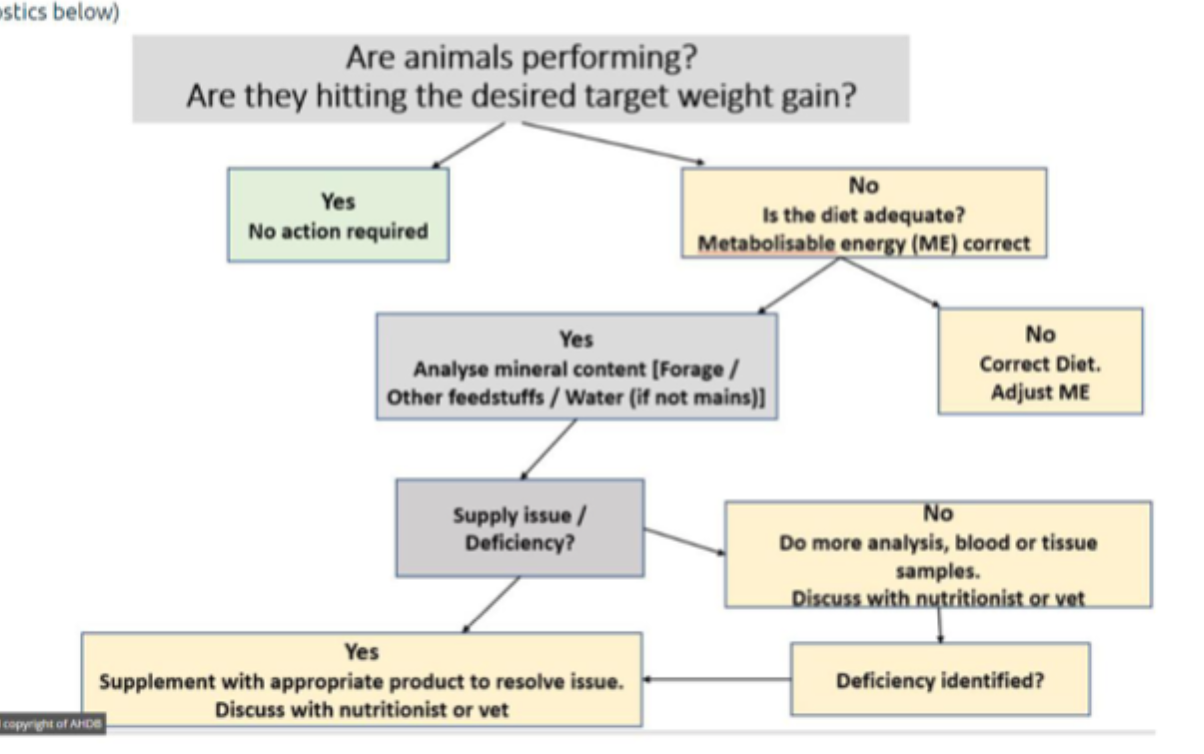
Detecting animal’s mineral status
Blood samples are commonly used to monitor the status of most minerals- Macro minerals
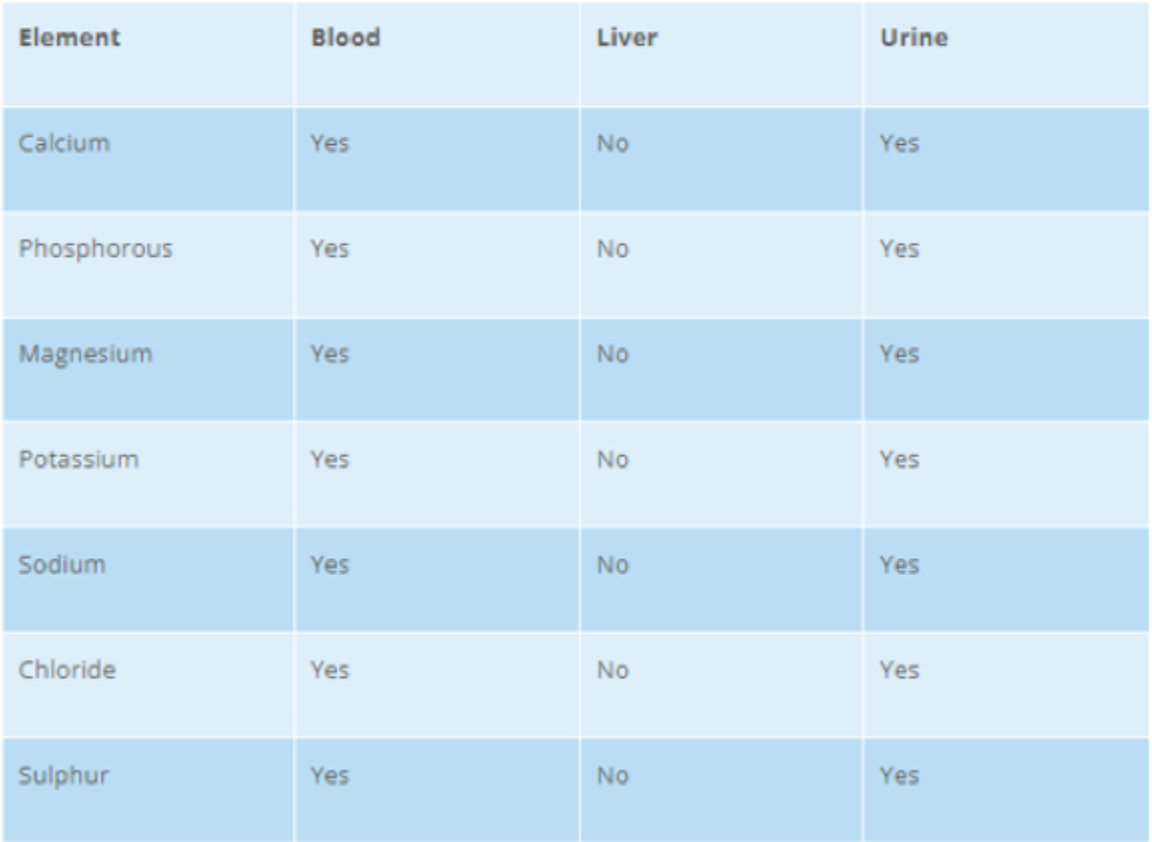
Detecting animal’s mineral status
Blood samples are commonly used to monitor the status of most minerals- Micro minerals
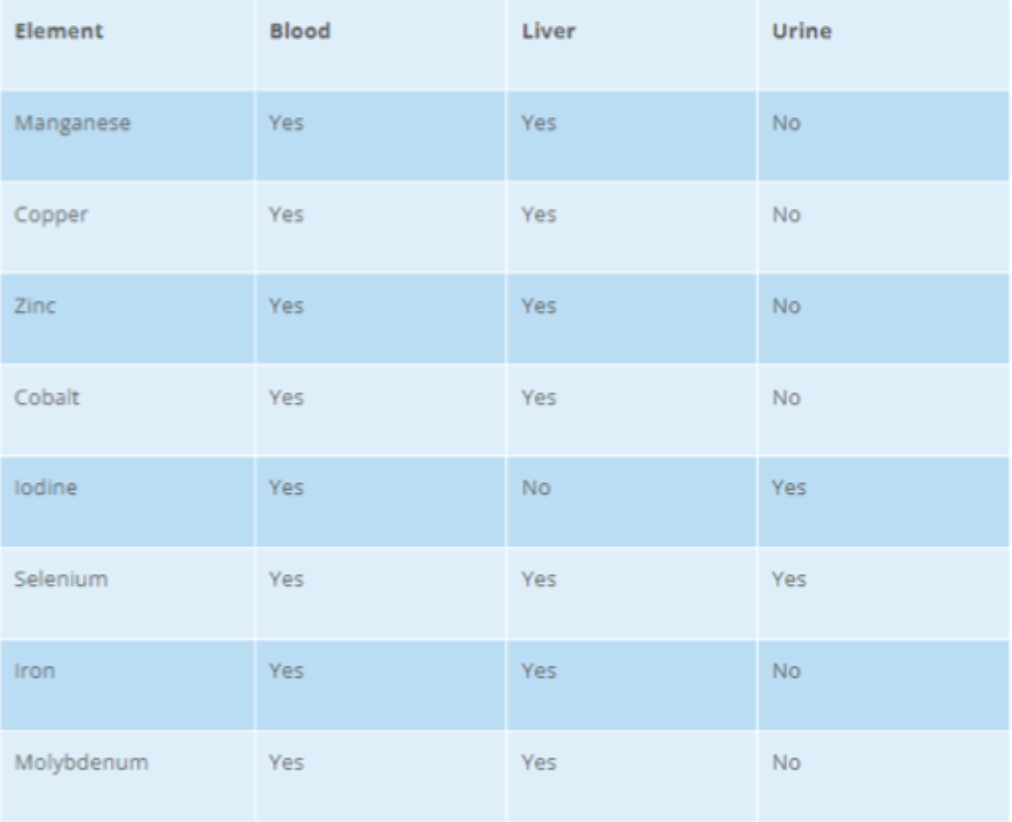
Animal feed additives
Additives: products used in animal nutrition for purposes of improving the quality of feed and the quality of food from animal origin, or to improve the animals’ performance and health, e.g. providing enhanced digestibility of the feed materials.
Types of feed additives
Antibiotics
Probiotics
Oligosaccharides
Antioxidants
Emulsifiers
Binders
Organic acids
Enzymes
Phytogenetics
Feed additives in horse nutrition
Joint supplements
Digestive supplements/ gut balancers
Hoof supplements
Respiratory/ breathing supplements
Calmers
Instant calmers
Hormone supplements for mares
Performance supplements
Veteran supplements
Skin and coat supplements
Supplements for horses on restricted grazing
Electrolytes
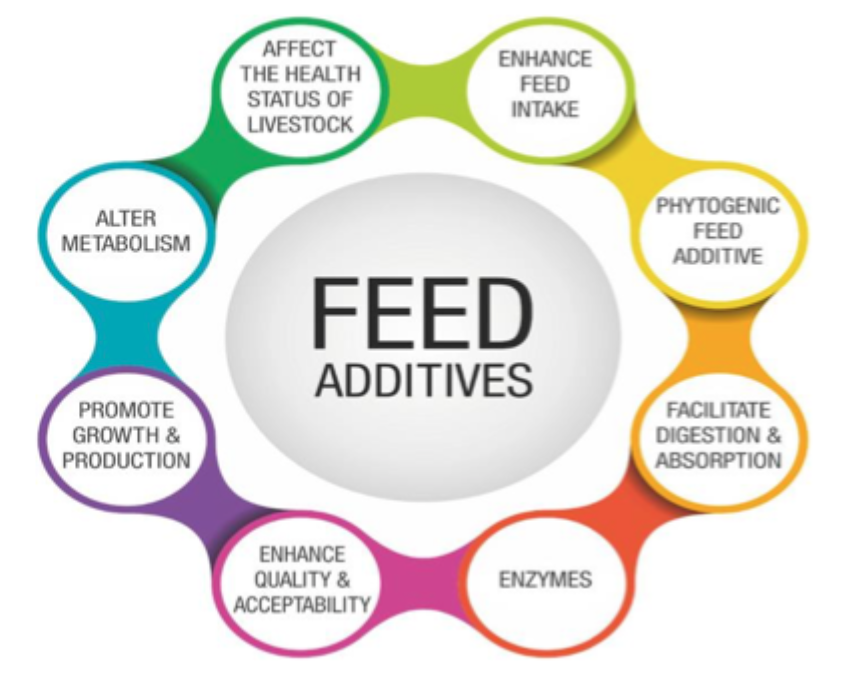
Joys of Legislation
Ever changing
Still not ratified
Legal maxima changing too
Cobalt
Iodine
Organic selenium
Zinc
Why it is crucial?
Legal compliance
Consumer protection: formulation, composition and declaration requirements
Animal health and safety: reducing the risk of adverse effects on animal health.
Quality control
Traceability
Food Standards Agency (UK) and European Food Safety Authority (EFSA) set guidelines for production, marketing, inclusion and storage of additives
Labelling
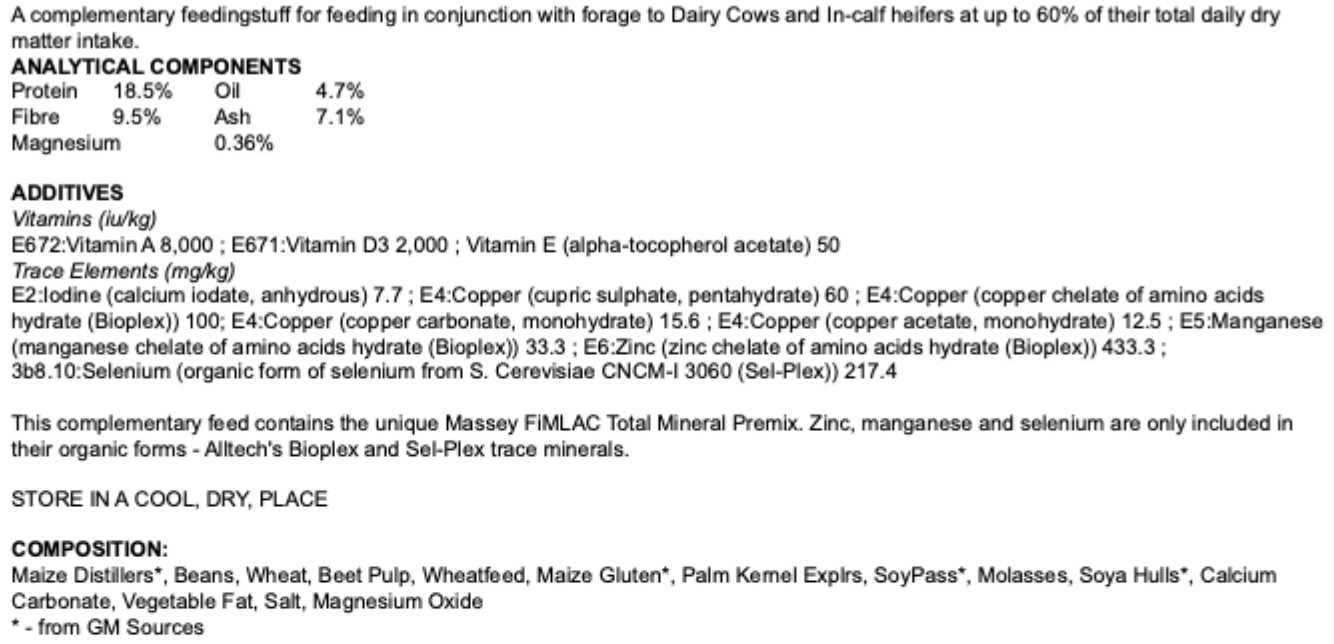
Conclusion
Prior to obvious clinical or subclinical signs of over- or under supply of macro or micronutrients, the animal’s immune status offers a quick response which can be used to monitor and prevent morbidity and mortality.
Optimal performance of animals is hinged on, not just the appropriate supply of energy sources and protein in thier diet, but very importantly, the provision of macro- and micro- minerals and vitamins.
Balancing mineral concentration is important because of the antagonistic and synergistic interactions among minerals, and with vitamins. Diet must meet the requirements of the animals for each but also appropriate ratios of some mineral/ vitamin to each other.
Deficiency or toxicity has significant health consequences and can often lead to death.
Other feed additives have potential health- enhancing and performance- enhancing qualities. There is a huge market as innovations are explored to meet consumer, farmer or animal preferences.